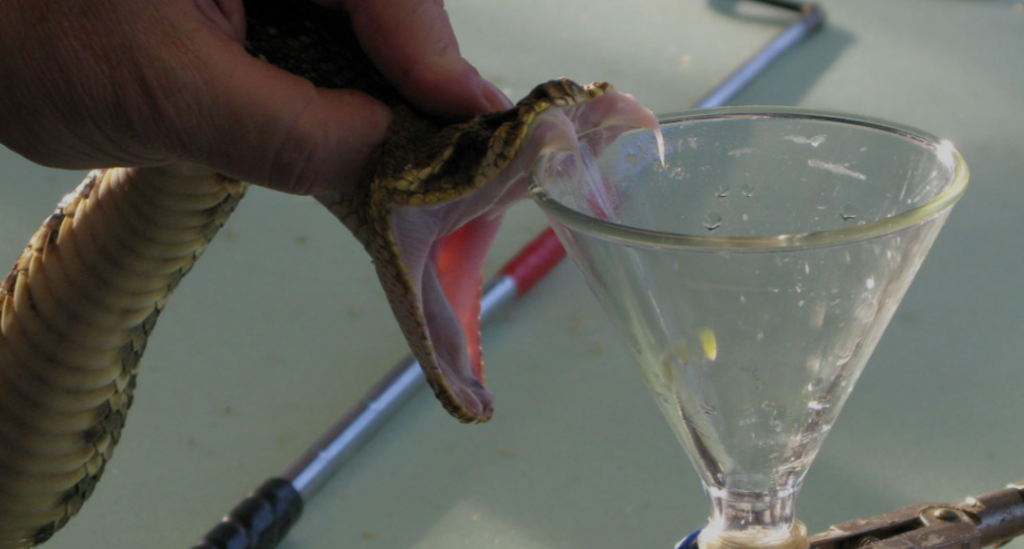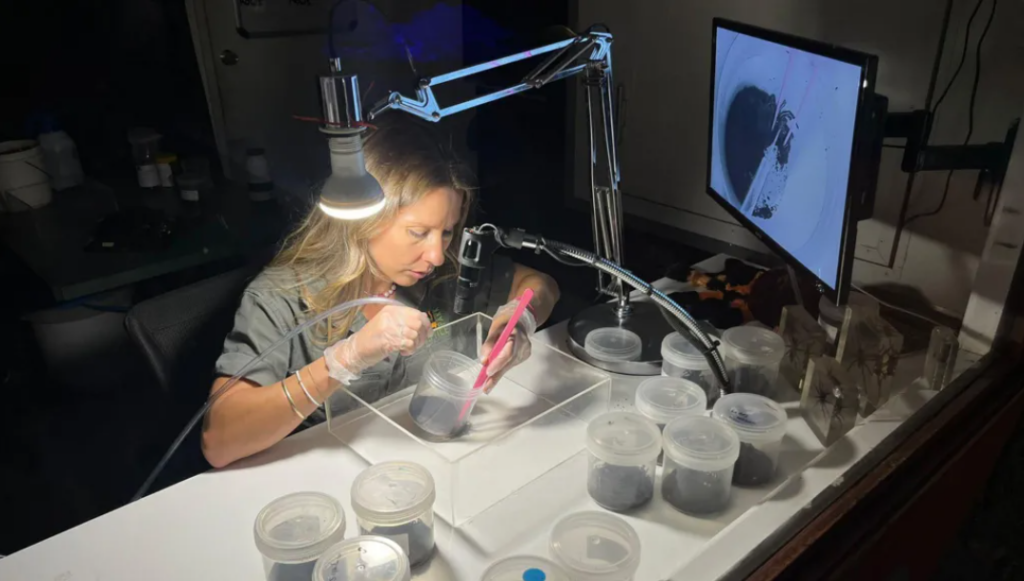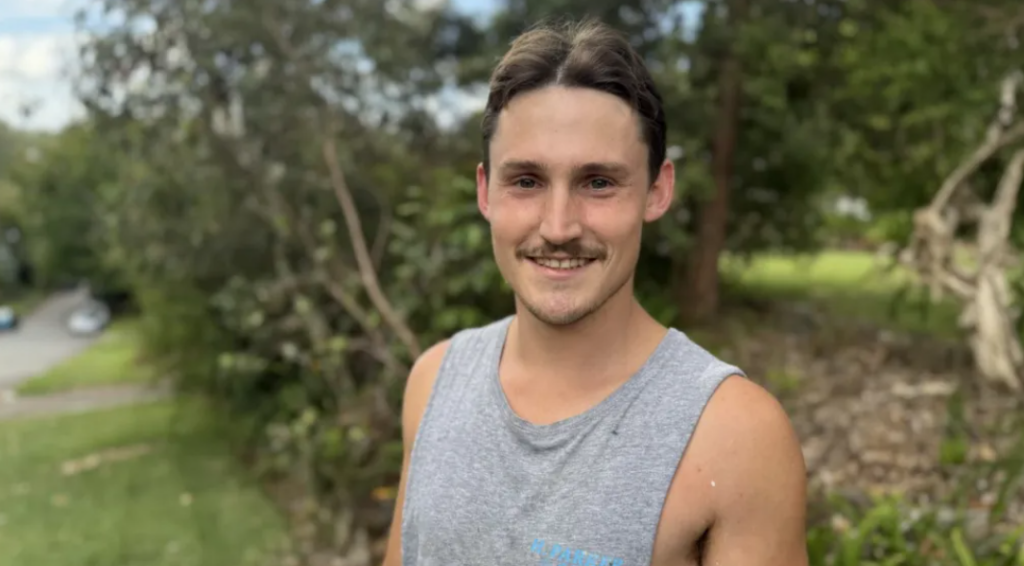
Australia’s ‘Spider Whisperer’ Harvests Venom to Save Lives
Inside the high-stakes world of funnel-web spider milking
AUSTRALIAN REPTILE PARK — Emma Teni’s steady hands work with surgical precision as she coaxes a deadly Sydney funnel-web spider into attack position. With its fangs bared, she carefully extracts venom using a pipette – a routine she repeats up to 80 times daily in this unique lifesaving operation.
The Spider Milking Process
- Delicate operation: Using bright pink tweezers, handlers trigger defensive stance
- Venom collection: Each spider yields about 0.2ml per milking session
- Safety first: Blackout curtains keep the arachnids calm during procedure
Why It Matters
✔ World’s deadliest: A single bite can kill a child in 15 minutes
✔ 100% survival rate: No deaths since antivenom program began in 1981
✔ Public participation: Locals deliver spiders to vet clinics for collection
Behind the Scenes
The program relies on:
• Specialized team that travels Sydney in a crocodile-branded van
• Community spider hunters who safely capture specimens
• Precision lab work to convert venom into life-saving antivenom
“People think we’re mad,” laughs Emma as another spider raises its legs. “But each drop of venom represents a potential life saved.”
Through the viewing window, wide-eyed visitors watch as Australia’s most feared creatures become its most valuable medical assets.

Why These Deadly Spiders Are Sydney’s Most Unlikely Lifesavers
Emma Teni explains that Sydney funnel-web spiders pose a dual threat: their venom is among the most toxic in the world, and they live right where people do – in Australia’s most crowded urban areas.
Take Charlie Simpson’s story. The 26-year-old handyman and his girlfriend had barely settled into their first home when he spotted not one, but two of these deadly spiders in their garden.
“Honestly, I should’ve worn thicker gloves,” Charlie admits. “Those fangs can pierce right through regular gardening gloves.” But he knew what to do – carefully capturing the second spider and taking it to a local vet, where Emma’s team collected it for their antivenom program.
“It’s funny,” Charlie laughs, “trying to safely catch the world’s deadliest spider is actually helping me get over my fear of them.”
As Emma carefully transfers a spider from a donated Vegemite jar into its new home, she clarifies an important point: “We’re not asking people to go spider hunting. Just if you see one, don’t kill it – contain it safely.”
She acknowledges the irony: “Yes, it sounds crazy to tell people to catch rather than kill the planet’s most venomous spider. But that spider Charlie brought us? Its venom could literally be the difference between life and death for someone.”
Every safely captured funnel-web represents potential antivenom doses that could save bite victims. It’s a strange but vital partnership between Sydney residents and the creatures that share their backyards.

Behind the Scenes at Australia’s Venom Collection Program
Every spider collected by Emma’s team arrives at the Australian Reptile Park to be carefully processed. Each specimen gets logged and separated by gender – females may join a breeding program to boost spider numbers, while the more venomous males (6-7 times more toxic than females) become part of the antivenom initiative, getting “milked” biweekly.
The extraction process uses a specialized pipette connected to suction tubing, designed to collect every precious drop. It’s painstaking work – while just a few drops of venom can kill a human, producing one vial of antivenom requires milking about 200 spiders.
Emma’s career path took an unexpected turn from marine biology (she originally worked with seals) to becoming the park’s resident “spider whisperer.” Now affectionately called “spider mama” by colleagues and “weirdo” by her daughter, she’s become the go-to spider expert for everyone she knows.
“Most women get flowers left at their door,” Emma laughs. “I come home to find spiders in jars waiting for me.”
The spider program complements the park’s long-running snake venom operations, active since the 1950s. While global snakebite deaths reach 140,000 annually (WHO data), Australia’s advanced antivenom program keeps fatalities remarkably low (1-4 deaths per year).
Park operations manager Billy Collett demonstrates the snake venom collection process, carefully handling a King Brown snake. With practiced ease, he guides the snake’s jaws over a clingfilm-covered shot glass – another routine but vital step in Australia’s life-saving venom production.

Deadly Venom Collection: Inside Australia’s Snake Milking Program
“This drop could kill everyone here five times over,” says venom expert as he extracts lethal snake toxins
AUSTRALIAN REPTILE PARK — Operations manager Billy Collett carefully maneuvers a king brown snake’s fangs over a collection glass, watching as thick yellow venom drips into the container. “These snakes rarely bite unless severely provoked,” he explains, “but when they do, the results can be catastrophic.”
Key Facts About Australia’s Venom Program
- Single venom dose from snakes like the eastern brown (world’s 2nd most venomous) could kill multiple adults
- Most bites occur when people attempt to kill snakes rather than leave them alone
- Specialized fridge stores labeled vials of various deadly venoms (taipan, tiger snake, death adder)
Safety First Approach
✔ Snakes prefer avoidance: “They don’t want to waste venom on creatures they can’t eat”
✔ Proper handling: Experts demonstrate safe venom extraction techniques
✔ Public education: Stressing coexistence over confrontation with venomous wildlife

From Venom to Antidote: Australia’s Life-Saving Science
*How deadly toxins become life-saving treatments in an 18-month transformation process*
MELBOURNE — The venom collected at the Australian Reptile Park begins its remarkable journey at CSL Seqirus laboratories, where scientists perform what amounts to medical alchemy – turning lethal toxins into life-saving antidotes.
The Antivenom Production Process
- Horses & Rabbits as Allies:
- Snake venom injected into horses (large, robust immune systems)
- Funnel-web venom given to rabbits (naturally immune)
- Gradual dose increases build powerful antibodies (takes up to 1 year)
- Precision Processing:
- Antibody-rich plasma extracted from animal blood
- Antibodies isolated and purified
- Final product bottled for medical use
Australia’s Antivenom Network
✔ 7,000 vials produced annually (covering snakes, spiders, marine creatures)
✔ Strategic distribution based on regional risks (e.g., taipan antivenom in north Australia)
✔ Special deliveries to Royal Flying Doctors, Navy ships, and remote clinics
“Creating antivenoms is a massive logistical challenge,” explains Dr. Jules Bayliss of CSL Seqirus. “We prioritize high-risk areas but ensure nationwide coverage for emergencies.”
Each vial remains effective for three years, creating a constant race against time to maintain this delicate medical safety net across the world’s sixth-largest country.

Australia’s ‘Snake Diplomacy’: Sharing Life-Saving Antivenom with Papua New Guinea
Cross-border medical cooperation tackles snakebite deaths in Pacific region
MELBOURNE/PORT MORESBY — Australia extends its world-leading antivenom program beyond its shores, donating 600 life-saving vials annually to Papua New Guinea in an act of medical diplomacy. The two nations share similar snake species – a legacy of their ancient land bridge connection.
Why PNG Needs Help
- Higher fatality rate: Far more deadly snakebites than Australia
- Limited medical access: Remote communities lack treatment options
- Proven results: Program has saved approximately 2,000 lives to date
“Honestly, our antivenom makes greater impact in PNG than at home,” admits CSL Seqirus executive Chris Larkin. “The need there is tremendous.”
Australian Humor Meets Deadly Reality
At the Reptile Park, staff joke about calling snakes “danger noodles” – typical Aussie humor about creatures that terrify many. But Operations Manager Billy Collett offers serious reassurance:
“Snakes aren’t lurking on every street corner waiting to attack tourists,” he says. “And if you must get bitten, Australia’s actually the safest place – free top-quality antivenom and world-class treatment.”
